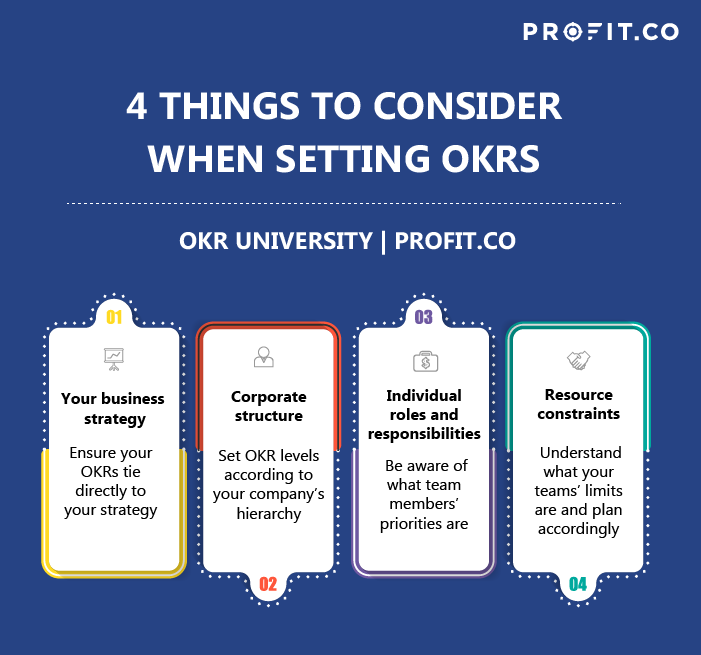TL;DR
Hybrid work models give employees flexibility, but they also pose challenges in communication, accountability, and alignment. OKRs (Objectives & Key Results) help solve these by creating a transparent, measurable framework that connects strategy to execution. By setting clear objectives, measurable key results, and aligning goals across corporate, team, and individual levels, OKRs ensure distributed teams remain focused and engaged. For HR and leadership, OKRs provide clarity, build trust, improve productivity, and reduce turnover—all critical for thriving in a hybrid work environment. HR teams worldwide are backing hybrid models for the way forward-a mix between working from home and the office. The idea is to allow employees to choose where they do their work, without dictating where that must be.Hybrid Work Environments
The workplace of the future will be defined by hybrid work. It will be a blend of open co-working spaces and offices, as well as working from home. Human Resources should look to integrate telecommuting and remote work with traditional office hours because this promotes accountability, productivity, and transparency.Success in a hybrid work environment requires employers to move beyond viewing remote or hybrid environments as a temporary or short-term strategy and to treat it as an opportunity.
OKR (Objectives & Key Results) Method
The OKR method helps to achieve better communication and alignment across teams by providing a language for sharing what everybody is working on, no matter where they are. OKRs help keep teams focused on what matters and set them up for success. Setting well-defined objectives, quantifiable key results (OKRs), an effective goal management system, and regular feedback are the best way to generate motivation, build trust, increase productivity and reduce risk in today’s globally distributed work environment.OKR is a way of defining company-wide goals and measuring performance against them. Management creates a statement of what it is they want to achieve, then sets out key results that need to be delivered to achieve the desired outcome. A variety of factors are taken into consideration when setting objectives, including:
- The business strategy
- Corporate governance structure
- Board of directors’ role and responsibilities
- Resource constraints and availability

The results are designed to be measurable, meaning they can be quantifiable or assessable within a set time frame. They should also focus on what is important to the employee without losing sight of company goals. The best objectives are not only measurable but also meaningful. Objectives should be clear and concise, with a variety of measurable factors to focus performance against. They need to be realistic, challenging, and attainable.
Working under the OKR methodology helps promote both team cooperation & unity as well as individual responsibility because all tasks are linked together by one overall goal: helping make progress toward your business’s “vision”. This makes everyone feel involved without having too much risk taken upon themselves (especially if you’re remote). By holding one another accountable for tasks & making sure these objectives are visible to everyone, your team will be much closer and more supportive than ever before. OKRs have been proven to be a successful way of aligning diverse employees with business objectives that are set by the CEO, as well as shifting workplace culture towards positive outcomes for all employees. HR can utilize OKRs to align workers with the company vision, mission, values and strategy. When more of the workforce understands how their work contributes to corporate objectives, they feel empowered to make decisions that improve efficiencies or help reduce costs. This also reduces employee turnover because people who are engaged in their work are more likely to feel they can make changes that improve the company’s operations. To learn more about how Profit.co and OKRs can transform your organization’s hybrid work model, book a free demo with our OKR experts.Ready to start your OKR Journey for FREE?
OKRs provide alignment and transparency, ensuring that teams working remotely or in-office stay connected to company strategy and contribute meaningfully toward shared goals.
OKRs create a common language for progress. Regular check-ins and visible key results foster open communication, build trust, and prevent silos in hybrid environments.
Yes. HR can use OKRs to align employees with company mission, values, and strategy, empowering individuals to see how their daily work impacts organizational success.
They help overcome lack of focus, poor accountability, and communication gaps by defining measurable outcomes and making progress visible across the organization.
Consider your business strategy, corporate structure, individual roles, and resource constraints. Set realistic yet ambitious objectives and ensure all employees see their contribution to company-wide goals.
Related Articles
-
8 Best OKR Software of 2025
As a leader, is there anything more frustrating than watching an expensive strategic plan lose momentum and gather dust? Your... Read more
-
Mastering OKRs: An Expert Q&A with Ben Lamont
TL;DR: Ben Lamont’s core guidance: nail it before you scale it, document clear deployment parameters, train internal coaches and KR... Read more
-
The Future of Customer Success: AI & OKRs Driving Outcomes
Samhitha Reddy Customer Success Manager Keeping customers happy is getting harder. They want faster responses, more personal service, and solutions... Read more
-
Beyond the Sprint: How OKRs Supercharge Agile in IT Services
Senthil Rajagopalan President & COO at Profit.co Last updated: July 15, 2025 If you work in IT services, you know... Read more

